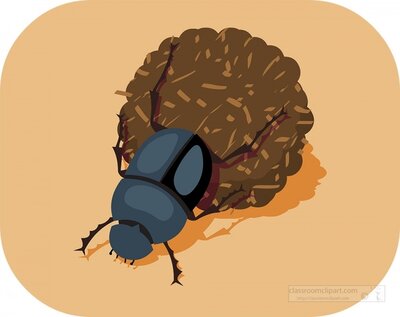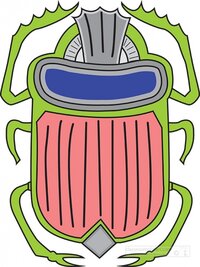Scarab beetle
|
|
| Revision as of 23:05, 3 Dec 2023 AcademicSysop2 (Talk | contribs) ← Go to previous diff |
Revision as of 23:06, 3 Dec 2023 AcademicSysop2 (Talk | contribs) The Scarabs of Ancient Egypt Go to next diff → |
||
| Line 22: | Line 22: | ||
| ==The Scarabs of Ancient Egypt== | ==The Scarabs of Ancient Egypt== | ||
| - | [[Image:Egypt.KV6.04.jpg|left|thumb|200px|A scarab beetle, depicted on the walls of [[KV6|Tomb KV6]] in the [[Valley of the Kings]]]] | + | [[Image:Ancient-egyptian-beetle-hieroglyphs-gray-color-clipart-54179.jpg|left|thumb|200px|A scarab beetle|ancient egyptian beetle hieroglyph - Provided by classroomclipart.com]] |
| Scarabs featured prominently in [[Egyptian art]] and [[Egyptian mythology]]. | Scarabs featured prominently in [[Egyptian art]] and [[Egyptian mythology]]. | ||
Revision as of 23:06, 3 Dec 2023
| Scarab beetles | ||||||||||
|---|---|---|---|---|---|---|---|---|---|---|
| Missing image Dungbeetle.jpg A dung beetle busy rolling its ball of dung | ||||||||||
| Scientific classification | ||||||||||
|
The scarab is a type of beetle noted for rolling dung into spherical balls and pushing it, as well as its habit of laying its eggs in animal dung. Because most of the scarab species work with dung they are commonly referred to as dung beetles.
The dung beetles are classified as family Scarabaeidae, which includes over 20,000 species in numerous genera, including the African genus Goliathus, the largest and heaviest of the beetles. Dung beetles live in many different habitats, including desert, farmland, forest, and grasslands. They do not like extremely cold or dry weather. They occur on all continents except Antarctica.
The majority of the dung beetle diet is dung. They will eat dung from a variety of animals as long as the animal is herbivorous. Dung beetles also feed on mushrooms, leaves, and decaying matter. Dung beetles do not need to eat anything else because the dung provides all the nutrients; they don't even need to drink water.
The dung beetle body consists of head, abdomen, and thorax. They have legs, located on the thorax, that are specialized for shoveling dung and rolling it along.
The dung beetle has complete metamorphosis. The female will lay an egg in a dung ball which will then be buried to protect it from erosion and predators. During the larval stage the dung beetle will feed on the dung surrounding it.
The Scarabs of Ancient Egypt
Scarabs featured prominently in Egyptian art and Egyptian mythology.
The scarab was considered sacred by the Ancient Egyptians because they believed that in its rolling dung balls around, it mirrored the way the great god Ra – or his avatar Khepri, himself depicted as a scarab – rolled the sun across the sky each day. Because of its additional habit of laying its eggs in animal dung and the bodies of dead animals, the scarab was also associated with rebirth, renewal and resurrection; consequently, it was seen as a symbol of life and rebirth.
Stone scarabs were often placed in Egyptian tombs as a symbol of the deceased's rebirth into the afterlife, and jewelry with the beetle has often been found in tombs as well. A scarab amulet was worn on the chest. A magical spell inscribed on the bottom of the amulet to make sure the deceased's heart wouldn't reveal any damning information when their heart was weighed during their judgement by the gods. Living Egyptians also wore stone scarabs as a symbol of protection in this life and the next.
References
- L.J. Miline and M. Miline, Insect Worlds: A Guide for Man on Making the Most of His Environment (Charles Scribner's Sons, 1980)
- Jean Henri Fabre, The Sacred Beetle in The Sacred Beetle and Other Great Essays in Science, (Prometheus Books, 1981), [ISBN 0879751444]


